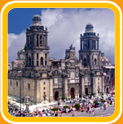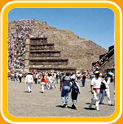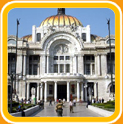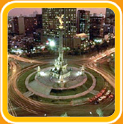|
|
|
|
The origins of Mexico city date back to the year 1325 when it was originally built by the Aztecs on Lake Texcoco. Tenochtitlán, as it was known, was razed to the ground by the invading army of Hernán Cortés in 1521. It was subsequently rebuilt by the Spanish, who constructed Catholic churches and luxurious palaces over many of the old Aztec temples sites. The city continued to grow, and in 1585 became officially known as Ciudad de México. |
|
|
|
|
|
|
|
|
|
|
The Centro Histórico and the Floating Gardens of Xochimilco in the south of the city are UNESCO World Heritage Sites. Famous landmarks in the Historic Center include the Plaza de la Constitución, the Metropolitan Cathedral and National Palace, and the pre-Hispanic Aztec temple ruins of Templo Mayor.
You shouldn't miss a visit to Chapultepec castle, the former imperial residence of Emperor Maximilian, and the National Museum of Anthropology, where some of Mexico's greatest pre-Hispanic treasures are housed.
In addition, the city boasts some 160 museums, at least 100 art galleries, and 30 concert halls, maintaining a constant cultural calendar throughout the year.
|
|
|
|
|
|
|
|
|
|
| |
Please contact us to check availability of these excursions and to make your reservations.
Check out our study package deals, for details of all inclusive study, accommodation and excursions. |
|
|
|
|
|
|
|
|






